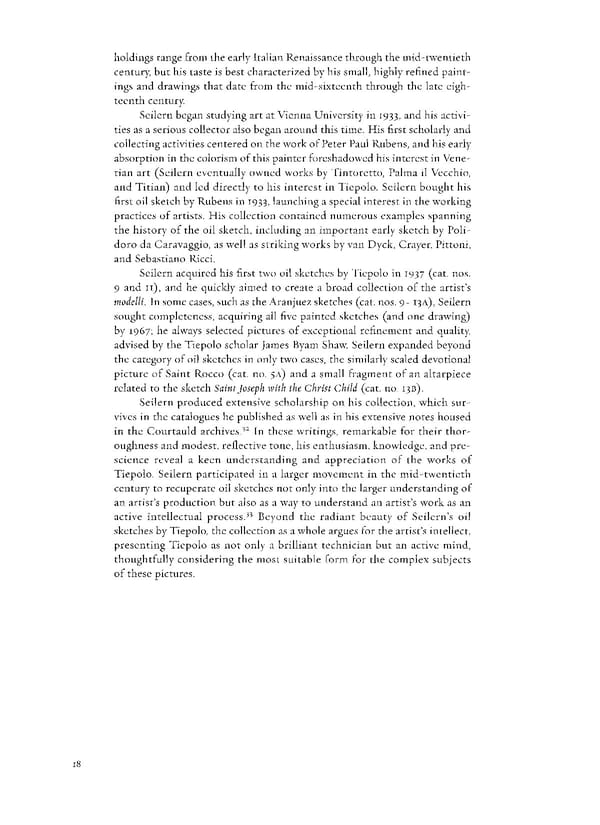holdings range from the early Italian Renaissance through the mid-twentieth century, but his taste is best characterized by his small, highly refined paint- ings and drawings that date from the mid-sixteenth through the late eigh- teenth century Seilern began studying art at Vienna University in 1933, and his activi- ties as a serious collector also began around this time. His first scholarly and collecting activities centered on the work of Peter Paul Rubens, and his early absorption in the colorism of this painter foreshadowed his interest in Vene- tian art (Seilern eventually owned works by Tintoretto, Palma il Vecchio, and Titian) and led directly to his interest in Tiepolo. Seilern bought his first oil sketch by Rubens in 1933, launching a special interest in the working practices of artists. His collection contained numerous examples spanning the history of the oil sketch, including an important early sketch by Poli- doro da Caravaggio, as well as striking works by van Dyck, Grayer, Pittoni, and Sebastiano Ricci. Seilern acquired his first two oil sketches by Tiepolo in 1937 (cat. nos. 9 and n), and he quickly aimed to create a broad collection of the artist's modelli. In some cases, such as the Aranjuez sketches (cat. nos. 9-I3A), Seilern sought completeness, acquiring all five painted sketches (and one drawing) by 1967; he always selected pictures of exceptional refinement and quality, advised by the Tiepolo scholar James Byam Shaw. Seilern expanded beyond the category of oil sketches in only two cases, the similarly scaled devotional picture of Saint Rocco (cat. no. $A) and a small fragment of an altarpiece related to the sketch Saint Joseph with the Christ Child (cat. no. 136). Seilern produced extensive scholarship on his collection, which sur- vives in the catalogues he published as well as in his extensive notes housed 32 in the Courtauld archives. In these writings, remarkable for their thor- oughness and modest, reflective tone, his enthusiasm, knowledge, and pre- science reveal a keen understanding and appreciation of the works of Tiepolo. Seilern participated in a larger movement in the mid-twentieth century to recuperate oil sketches not only into the larger understanding of an artist's production but also as a way to understand an artist's work as an 33 active intellectual process. Beyond the radiant beauty of Seilern's oil sketches by Tiepolo, the collection as a whole argues for the artist's intellect, presenting Tiepolo as not only a brilliant technician but an active mind, thoughtfully considering the most suitable form for the complex subjects of these pictures. 18
 Giambattista Tiepolo: Fifteen Oil Sketches Page 18 Page 20
Giambattista Tiepolo: Fifteen Oil Sketches Page 18 Page 20